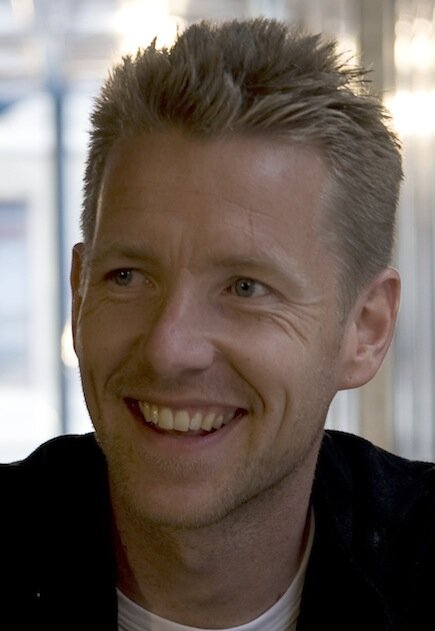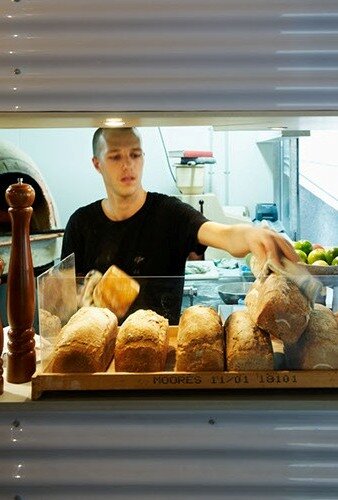The Greenhouse is about designing and operating better places for people. Places that let us touch natural materials, understand where everyday things come from and taste fresh food straight from the garden.
Designers, engineers, builders, scientists, farmers, chefs and others are among those whose knowledge and advice have gone into every aspect of creating the Greenhouse, from the lighting, to the menu, to the fresh baked bread and the worm farm. The Greenhouse aims to harness the growing understanding of the human footprint to offer alternative solutions that tread a fine balance between functionality, sustainability and beauty.
All the features of the Greenhouse are carefully considered first for their practicality, recyclability, life cycle and embodied energy and then for their aesthetics and cost. By putting each decision through this rigorous process, it is hoped that the Greenhouse can provide information and examples to builders, designers, restaurateurs and the public, regarding their daily choices of materials, ingredients, and practices.
Nobody ever convinced anyone of anything by shouting it at them. We hope that we can quietly share some of what we have learned, and let the results speak for themselves.
Productive building…
The Greenhouse St Georges Terrace uses the Productive Building system developed by Joost Bakker. This system includes some of the concepts outlined below.
• Use recycled and/or recyclable materials
• Built to be easily dismantled and recycled
• No use of chemical or harmful treatments on surfaces and in materials
• Minimize ecological footprint through careful consideration of sourced materials, their lifecycle, and the buildings operation and maintenance
• Encourage a new perspective on building and the function of buildings as a productive place that can harvest food, water and energy, and can improve the local environment for people and animals rather than exploiting it
• Building can be made, transported and assembled quickly and efficiently minimizing the transport of materials, keeping costs low, allowing unskilled labour to assemble
• Building design is flexible and adaptable to variety of environments and applications and can use all locally sourced materials.
Productive building method
• Steel frame is made from roll formed 1 mm steel coil, processed through a Framecad roll-forming machine and screwed together on site with galvanized steel screws
• Steel frame firstly clad in plywood for structural integrity and to create a thermal barrier
• Wall and roof cavities filled with straw bales sourced from grain farmers near Dumbleyung in the West Australian wheat belt. The frame is designed to fit these straw bales tightly and lock them in place
• External cladding of corrugated iron covered with a vertical wall garden made from steel mesh and terracotta plant pots
• Internal fit out, installation of windows and doors and creation of rooftop garden
Materials
• Steel
- 100% Recyclable, steel takes only 25% of the energy to recycle into another product once itexists, than it took to initially extract/create it
- Fast and easy to assemble
- Accurate, lightweight and extremely strong
- Allows for minimal material use given its strength

• Straw Bales
- One of the world’s most problematic waste products
- Can be sourced most places in the world from many different types of grain, including wheat, barley, rice.
- Fire safe and long lasting if kept dry
- Very high insulation rating
- (Alternatively walls can be insulated with soil, recycled paper, plastic, etc. where straw is not available).

• Plywood
- Sourced from plantation trees that are generally young and fast growing.
- Can be recycled into chipboard, wafer board, etc.
- Provides great strength to frame when engineering a building where loading is a consideration (if rooftop garden is used).
- Provides thermal barrier between external surface, steel frame/straw, and internal space.
- Can be left untreated internally.

• Corrugated Iron
- Like steel is recyclable
- Nests low volume in transport and is therefore efficient to move
- Long lasting and tough, makes for ideal exterior cladding

• Galvanized Steel Screws
- Can be recycled along with steel frame
- Allows for easy dismantling of building on demolition
- Can be used by unskilled labour to assemble entire building

• Plaspanel- (Some Bar and Kitchen Surfaces)
- Manufactured from recycled plastic waste in high density polyethylene (HDPE) and can itself be recycled
- Waterproof so does not rot, swell, delaminate, deteriorate or absorb moisture.
- Comes in variety of vibrant colours
- Australian made






